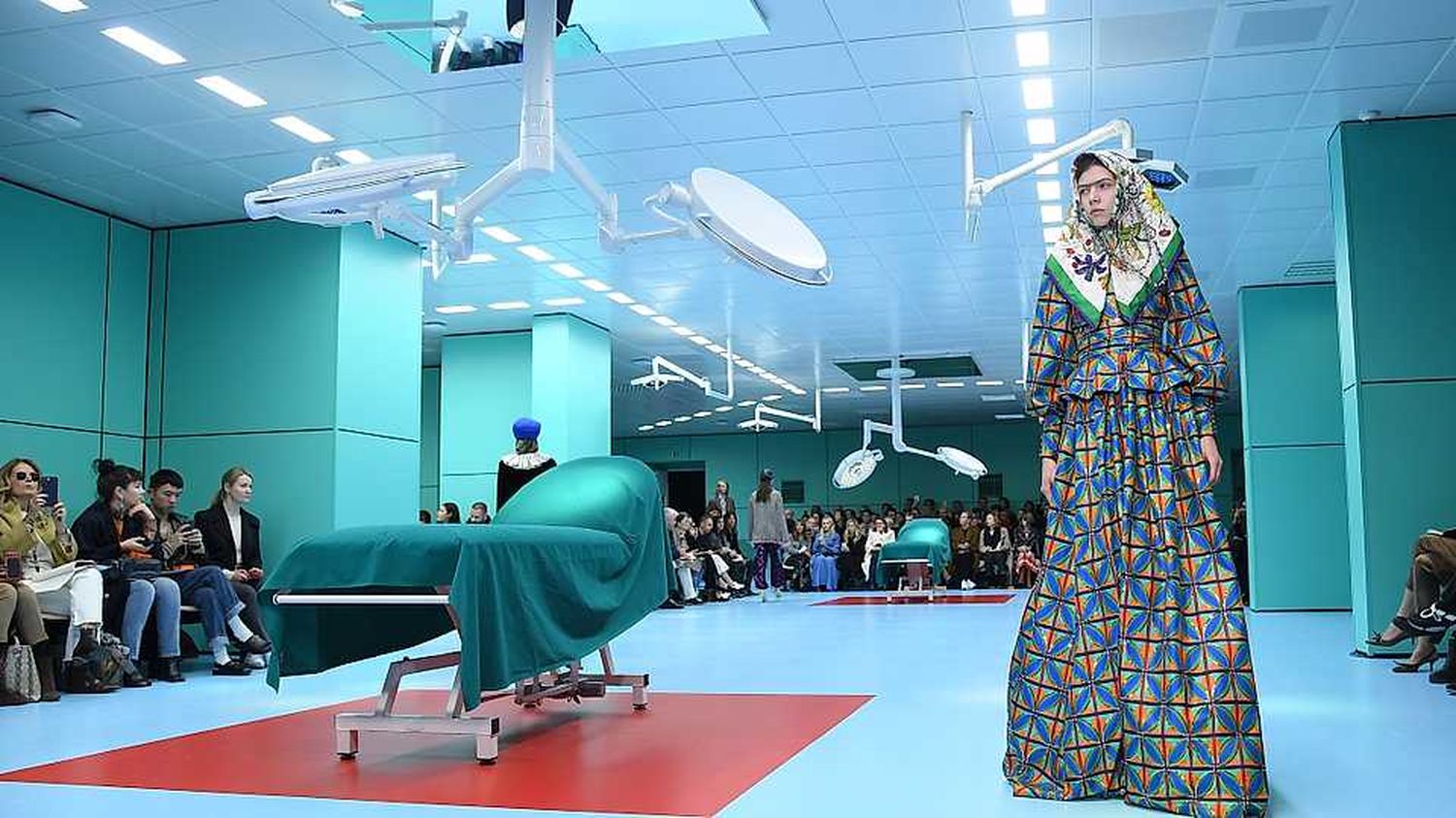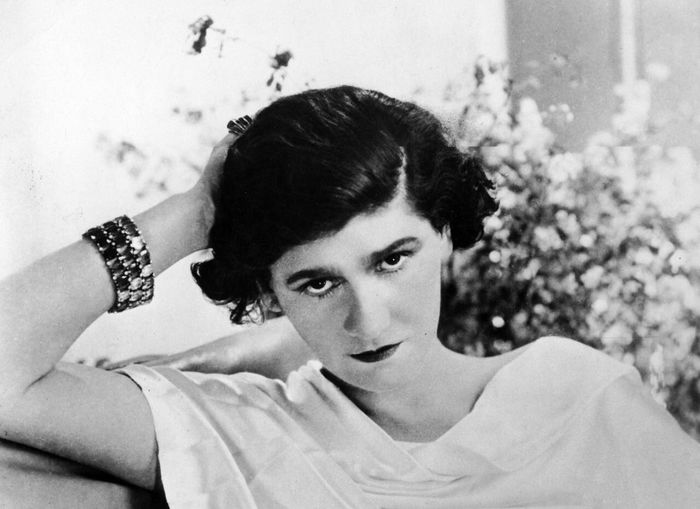The intention of a fashion creative director begins as totalising, singular, and domineering. At a collection’s premiere as a spectated object, its debutante ball, the creative director wields power over meaning in its entirety.
The meaning of a collection is composed of its surrounding elements, all under the helm of the designer. Show notes are the most explicit expression of the creative directors’ intention. Gucci’s designer Alessandro Michele lay out his manifesto for the Autumn/Winter 2018 show according to the frameworks of the Foucauldian Panopticon, alluding to internalised conformity due to fear of social consequences, and Donna Haraway’s A Cyborg Manifesto, in which a cyborg is described as a creature rejecting rigid boundaries and labels. This is where the collection takes its name Cyborg and its inspiration from.
“Every mode of expression conveys Michele’s concept of the ‘cyborg’ - individuals who revel in an absolute bizarreness of aesthetics and identities regardless of social norms”
The runway set formed the literal and conceptual backdrop for the collection, with the operating theatres referring to the birth of the ‘self’ and individual identity, yet implying a sense of social sterility and control. Classical music was overlaid with sounds of the operating theatre. Like for all fashion shows, the hair, make-up, casting of models, how they walk, the order of looks, props, and styling were all controlled and channeled towards conveying the intention of the designer. In Gucci AW18, some models were painted with third eyes; some cradled dragons or even their own decapitated heads. Disparate fashion elements are styled into one look: a 70s-patterned trouser worn under a flapper-inspired beaded sequin dress and a costumey bedazzled jacket, for example. Every mode of expression conveyed Michele’s concept of the ‘cyborg’ — individuals who revel in an absolute bizarreness of aesthetics and identities regardless of social norms.
The ‘signifier’ of a collection’s meaning is not merely the clothing, but the set, show notes, props, styling, accessories, models and music — they made up the self-titled “Gucci pluriverse” under the grasp of Michele. His singular vision came to life, engulfing all aspects of the runway experience — which, essentially, is the finite universe the clothing exists in. The question here is how its meaning translates and transfigures beyond this autocracy of the auteur-designer.
Even as the excluded masses have access to scroll through Vogue Runway online to view each look of the collection, the meaning of the show is already compromised. Show invitations are themselves an aspect of this fashion world-building, and show notes — the articulator of a collection’s meaning — are notoriously difficult to access. Even with access to show notes, comprehending Foucault and ‘A Cyborg Manifesto’ pose another obstacle, due to an understanding contingent on knowledge.
Fashion arguably does not need these explicit articulations of meaning since it is undoubtedly a visual language. However, interpretation of its meaning is not universal. The way in which the general (excluded) public can view a collection and thus how they interpret its meaning is incomplete. This is because creative directors today, especially those designing for luxury brands with sufficient resources, strive beyond tactile visuality to create — essentially — ‘vibes’. Virgil Abloh spoke of creating ‘ambience’ in regards to his latest Louis Vuitton SS22 mens’ collection, similar to the Gucci ‘pluriverse’ in the construction of a surrounding visual language and experience. The shows, for most, are instead experienced remotely in static, silent photographic frames on a digital screen. Videos are still inadequate: no matter how many times I watch ‘Dior and I’ (the 2014 documentary following Raf Simons for his first collection at Dior), I will never quite comprehend how sitting among the rooms of fresh-flower-walls smelled and felt. Watching models go down the runway on a fashion influencer’s instagram story will certainly never compare. The immersive atmospheres that designers create tend to be both ephemeral and exclusive.
“Once the audience claps and the curtains go down, the clothing not only loses this surrounding world of visual language which constructs the designer’s intended meaning, but the collection fractures into units of single garments rather than styled ‘looks’”
During the pandemic, experiencing fashion shows digitally became the norm, but access to them was not fully public. Loewe’s ‘show-in-a-box’ paper dolls are an example of more physical experiences with exclusive access. Some designers, however, have worked to communicate their collections’ meanings to a broader audience. Alessandro Michele’s Gucci is a great example; his seven-part YouTube series titled ‘Ouverture of Something that Never Ended’ from 2020 created an entire cinematic universe of characters, clothing, philosophical musings, and ‘vibes’ which are publicly available. But access is only one part of the equation — how devoted are the public to digging up fashion’s meaning, and especially their consumers? Gucci’s film series was more than an hour long; some extra reading is probably needed to understand Foucault and Haraway. Do people even read the reviews on Vogue Runway? The bottom line is that the world created by the auteur-designer and hence the meaning it conveys is exclusive.
Once the audience claps and the curtains go down, the clothing not only loses this surrounding world of visual language which constructs the designer’s intended meaning, but the collection fractures into units of single garments rather than styled ‘looks’. This is perhaps exceptionally important to our example of the Gucci AW18 show because much of the collection’s concept of challenging the social bounds of identity was conveyed through the combination of disparate styles, subcultures and eras into one outfit.
These individual garments leap off and their meaning transfigures within the industry in two ways. Firstly, fashion magazines take pieces from collections and place them into their editorials. Editors have the ability to create an alternate universe from that on the runway, casting models, choosing the photographer, re-styling pieces, controlling setting, and deciding on layout. The surrounding visual language is transformed, and so the clothing — analogous to a singular word within the language — can take on a different meaning.
“The physical garments do not become blank slates, as their form is fundamentally structuring, but what they do carry is less so ‘meaning’ and more potential for it”
Secondly, the fashion houses atomise the collection to buyers (for stores such as Net-a-Porter or Harvey Nichols), breaking it down into individual garments on linesheets with serial numbers and colour codes. Surrounding visuals are stripped down in the stage of fashion commercialisation. Online stores often have white backgrounds and the clothes are styled on models in order to best display the piece, not to regenerate meaning; in person, high-end department stores often place garments in minimalistic interiors. Within the stores of the specific fashion houses themselves, their interiors can in no way reflect and contextualise the meaning of each collection considering the frequency of fashion seasons and thus the frequency of new intentions and meanings. The physical garments do not become blank slates, as their form is fundamentally structuring, but what they do carry is less so ‘meaning’ and more the potential for it. General social signifiers inform this potential, with blazers having suggestions of business, prairie dresses of the summer and cottagecore femininity, leather of severity and luxury.
This potential for the consumer to reinterpret, reconstruct and reinject the meaning of clothing blossoms beyond the runway. A blazer could be bought for the start of a new job, the prairie dress thrifted for a family summer party, the leather jacket stolen from mum’s closet. To the owner and wearer, a pair of trousers could be ones which make them feel most confident, or a jacket for when they feel more feminine, not ones which convey the experience of an identity ‘rebirth’ due to the need to transcend Foucauldian biopower to become a ‘cyborg’ of dichotomic elements.
Or, in fact, this meaning could live on when the intentions of the designer align with that of the wearer — due to the knowledge of an ardent follower of fashion, or inadvertently by an individual challenging social binaries through clothing. The voice of the maker is more enduring in the style of camp, with its characteristic playfulness, extravagance and references more entrenched in the garment itself. The denim, leather and trench coat pannier minidresses of Moschino’s Fall 2020 collection, for example, clearly reference Marie Antoinette, Rococo and the French Revolution to explore modern protest, class and luxury. Where, how, and by whom it is worn, however, would still recontextualise and comment on these notions in different ways. Think about if a European socialite wore this to a party, compared to if an activist drag queen did. Saint Laurent’s Le Smoking suit, as another example, was intended to transgress gender boundaries, and this concept did not undergo much change when worn by the contemporary consumer. This is because its form corresponded to its social signifier — wearing a tuxedo suit was radical for women in the 1960s. Despite this, its meaning is still malleable. Lakeith Stanfield wearing a women’s Le Smoking at the Oscars shifted its meaning as a black man dons a silhouette now accepted to be worn by women in 2021. The milieu changed, the wearer changed, the intention changed.
What happens is a process of entropy — an outgrowth into disorder, pluralism. Unflinching creative control guarantees a transient moment of autocracy over meaning, but the fundamental utilitarianism and commercialism of fashion results in garments which are malleable to the individual consumer. The designer’s power and intention in no way ground the meaning of a garment, since their intentions are conveyed through a supporting language of visuals, words, and ‘vibes’. Garments, even if created with intention and artistic autocracy, do not possess inherent, authentic meaning.
Fashion’s power lies in its very diffusion of the control over meaning. Its malleability and relationship with the surrounding language allows for meaning to become personal and emotional, something draped and molded into our lives. And this is at the basis of the Gucci AW18 show — that clothing with meaning prescribed by social convention can always be recontextualised, that identities can be subverted and new ones created. It is not that clothing cannot speak for itself, but that we can all speak through clothing.


